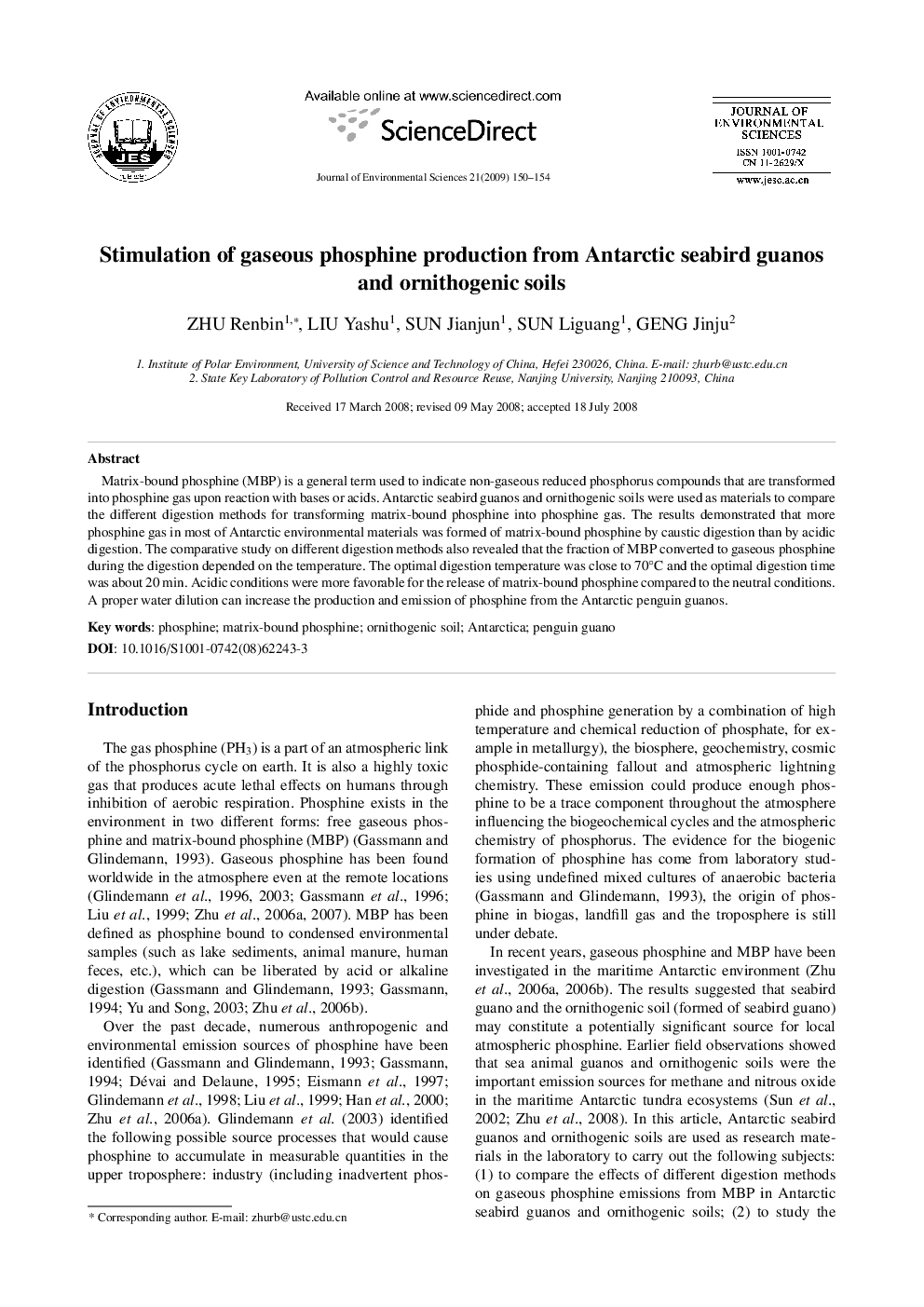| Article ID | Journal | Published Year | Pages | File Type |
|---|---|---|---|---|
| 4456165 | Journal of Environmental Sciences | 2009 | 5 Pages |
Matrix-bound phosphine (MBP) is a general term used to indicate non-gaseous reduced phosphorus compounds that are transformed into phosphine gas upon reaction with bases or acids. Antarctic seabird guanos and ornithogenic soils were used as materials to compare the different digestion methods for transforming matrix-bound phosphine into phosphine gas. The results demonstrated that more phosphine gas in most of Antarctic environmental materials was formed of matrix-bound phosphine by caustic digestion than by acidic digestion. The comparative study on different digestion methods also revealed that the fraction of MBP converted to gaseous phosphine during the digestion depended on the temperature. The optimal digestion temperature was close to 70°C and the optimal digestion time was about 20 min. Acidic conditions were more favorable for the release of matrix-bound phosphine compared to the neutral conditions. A proper water dilution can increase the production and emission of phosphine from the Antarctic penguin guanos.
